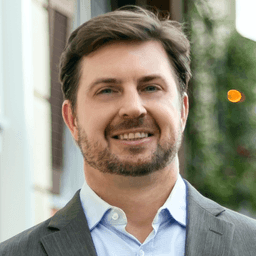

Miles Lancaster
April 3rd, 2024
Imagine facing a sudden outage originating from a hidden flaw in your IT stack. Or maybe something more random happens – like an unexpected natural disaster such as a flood or earthquake. In these moments, your immediate goals are clear: quickly mitigate the situation, identify what happened, and figure out how to resolve any vulnerabilities in the future.
That sounds nice in theory, however, many organizations lack the solutions to evaluate their resilience against these disruptions. They all too often wait until a crisis hits to assess their readiness.
This is why an Operational Resilience Framework is critical.
An Operational Resilience Framework is an emerging strategy for organizations globally. It’s a fairly new concept that has been adapting to new regulations. For instance, in the United States, an ORF is defined primarily by business continuity. But in the UK and EU, there are more strict regulations like DORA to help organizations better prepare and measure their operational resilience.
As such, this means that ORFs can be tailored to address the specific risks, regulations, and resilience objectives of organizations worldwide.
From a big-picture perspective, an Operational Resilience Framework is the capacity of an organization to sustain its core operations despite disruptions. The Global Resilience Federation is currently developing a standardized approach to ORF, but it is a broader approach to overall risk management and response strategies – not specific to IT issues.
There is no standardized industry model to gauge resilience maturity. But according to industry leaders, there are guidelines, such as this Resiliency Maturity Model whitepaper by Patrick Boyle. In it, he outlines five levels of maturity, broken down below:
Low Resiliency / Very High Risk: Organizations at this level experience frequent and significant outages with major negative business impacts. Often, there is no strategy or plan.
Reactive Resiliency / High Risk: At this level, organizations still face a high risk of impact from disruptive events but rely on the willpower of the IT organization to recover. There is no formal plan, and IT personnel handle the situations manually.
Prepared Resiliency / Medium Risk: Organizations begin to invest in building their recovery capabilities and resilience. A strategy and roadmap are created and automation is introduced, but the risk level remains medium due to potential surprises.
Proactive Resiliency / Low Risk: Recovery plans are fully documented, and proactive validations of the resiliency happen regularly.
Resilient / Low Risk: The highest level of maturity. Well-planned, prepared, tested, and continuously improved resiliency and recovery capabilities are enacted. Automation allows for potential self-healing, and future changes in tech and applications are successfully managed.
The model advocates for proactive risk management, continuous improvement, and the integration of resilience into organizational culture to enhance the ability to recover from disruptions effectively.
At BugZero, we take this concept further and define an Operational Resilience Framework as a forward-looking strategy that goes beyond traditional Business Continuity and Disaster Recovery (BCDR). It focuses on ensuring an organization can not only survive but thrive in the face of would-be disruptions.
We do this by proactively examining and mitigating potential risks in the hardware, software, and cloud side of the world. Once implemented, we increase an organization’s resilience maturity. We automate tasks that reduce human error and continuously monitor for disrupting vendor bugs. Implementing BugZero will catapult your org to Level 4 Proactive Resiliency for IT vendor defect management.
Our methodology involves the following strategies:
Proactive Risk Management: Identify and address risks before they escalate, across all aspects of IT Operations.
Long-term Strategy Development: BugZero aids long-term risk management strategies that involve more than just immediate outage recovery.
Integration with ITIL Processes: BugZero leverages ITIL processes, like Problem Management, to ensure systematic and best-practice approaches. If your organization is already following ITSM/ITOM best practices with a CMBD. If you’re not, BugZero will help drive your organization to more mature processes.
Operational Resilience as a Culture: We help build resilience into your organizational culture – team members using BugZero will be complying with operations best practices.
We pride ourselves in building an approach that’s not just about keeping the lights on. It’s about illuminating new paths to innovation and stability, even in the face of unforeseen challenges.
"Our vision is to help IT teams be more proactive, increase uptime, and ultimately have a better work/life balance than is possible today."
BugZero not only anticipates disruptions but empowers organizations to catch them before it’s too late. Our solution shines a light on third-party software bug risks – elevating resilience by automating bug management with constant monitoring.
At BugZero, we’re pioneering new worlds of resilience. Curious how we do it? Let’s talk about the BugZero solution.


Eric DeGrass
June 3rd, 2025


Eric DeGrass
May 14th, 2025


Eric DeGrass
March 14th, 2024
Sign up to receive a monthly email with stories and guidance on getting proactive with vendor risk
BugZero requires your corporate email address to provide you with updates and insights about the BugZero solution, Operational Defect Database (ODD), and other IT Operational Resilience matters. As fellow IT people, we hate spam too. We prioritize the security of your personal information and will only reach out only once a month with pertinent and valuable content.
You may unsubscribe from these communications at anytime. For information on how to unsubscribe, as well as our privacy practices and commitment to protecting your privacy, check out our Privacy Policy.